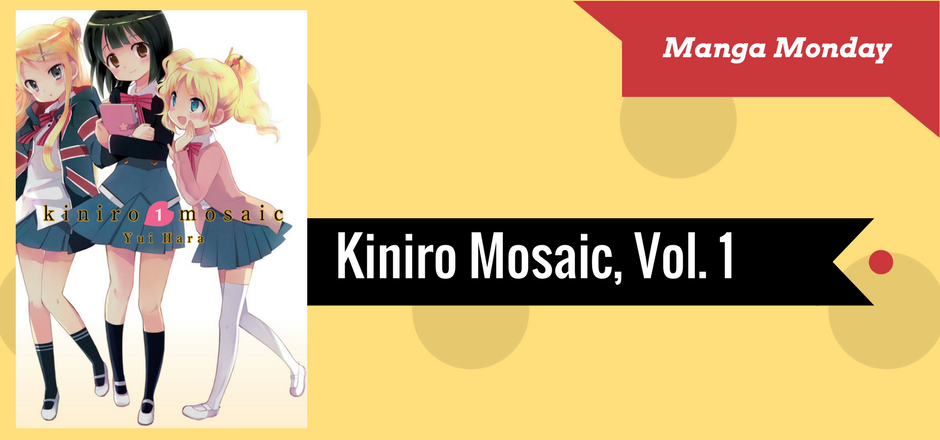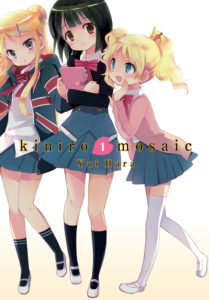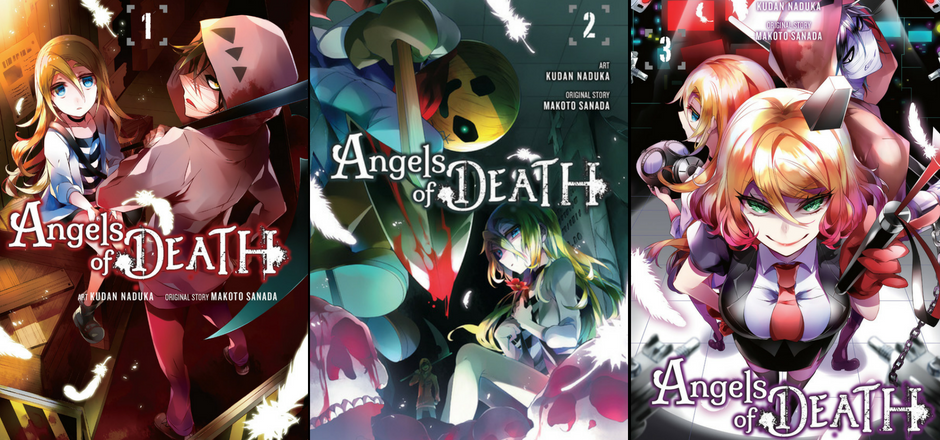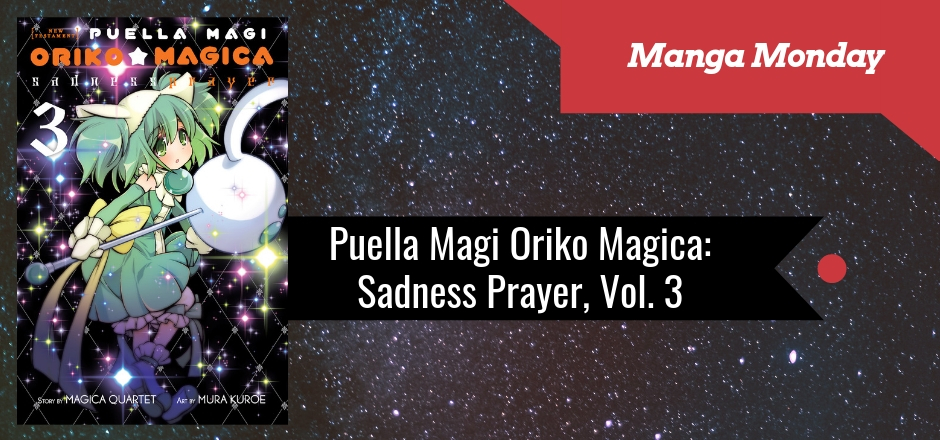Enamored with Japanese culture, Alice has just transferred to a school in Japan from England. She can’t wait to reunite with Shinobu, the girl who did a homestay at her house years ago. Despite the fact that the girls couldn’t speak each other’s languages, they became friends, promising to see each other once again. Now, with their friends Aya, Karen, and Youko, the girls are up to new shenanigans as they learn more about Japanese language, culture, and each other.
Kiniro Mosaic, written and illustrated by Yui Hara, is one of Yen Press’ latest additions to the “cute high school students doing cute high school things” slice-of-life comedy canon. As is the case with many slice-of-life series, there’s not really a plot. Instead, the series follows the group of girls throughout their day to day life, delivering sets of gags around common points of interest such as lunch, reading out loud in class, and hairstyles.
As a yonkoma or 4koma manga, the punchlines and their set ups are quick well-delivered—as long as you understand the basics of Japanese and British culture. While many of the jokes are obvious without context, a lot of the humor comes from culture shock—which is, to be fair, the series’ shtick. With Alice and Karen as transfer students, the humor is literally in the translation, and the manga can almost be educational for those unfamiliar with the nuances of daily Japanese life and language.
Each character introduced has a different personality trait that defines them, providing the framework for the humor. However, although many of the jokes are funny and the characters cute, the series doesn’t do much to make itself memorable. Sure, it’s a pleasant read—the girls are (mostly) kind to one another, teasing each other as friends do, but the characters are too mild and normal in their quirks when compared to superstar series like Azumanga Daioh and not gay enough in their crushes on each other to compete with series like Sakura Trick. The jokes are there, but they’re not ones you’re going to remember long enough to tell your friends, and it’ll be especially disappointing if you approach this series looking for girls’ love.
As for the artwork, it’s exactly what you’d expect. Cute, simple, with plenty of chibi expressions. The character style is a little less moe than some of the other series of the same genre, as it actually draws the characters in a way that is a little more realistic, although its anime equivalent simplifies it for the screen.
It’s still enjoyable, sure, but as it’s a 4-koma, and as the series doesn’t have an edge to it. There’s nothing to compel the reader to keep reading other than the sheer pleasure of it. But if you enjoy series like KO-N!, Non Non Biyori (or the other series mentioned previously), then this is one you’re likely to find fun and comforting.
Story: 3 out of 5 stars
Art: 4 out of 5 stars
Overall: 3.5 out of 5 stars
Goodreads | Indiebound | RightStuf
This review contains affiliate links. While Girls in Capes does make revenue from purchases made at affiliate links, reviews are not paid, and all reviews contain the staff writers’ honest opinions of the work.






